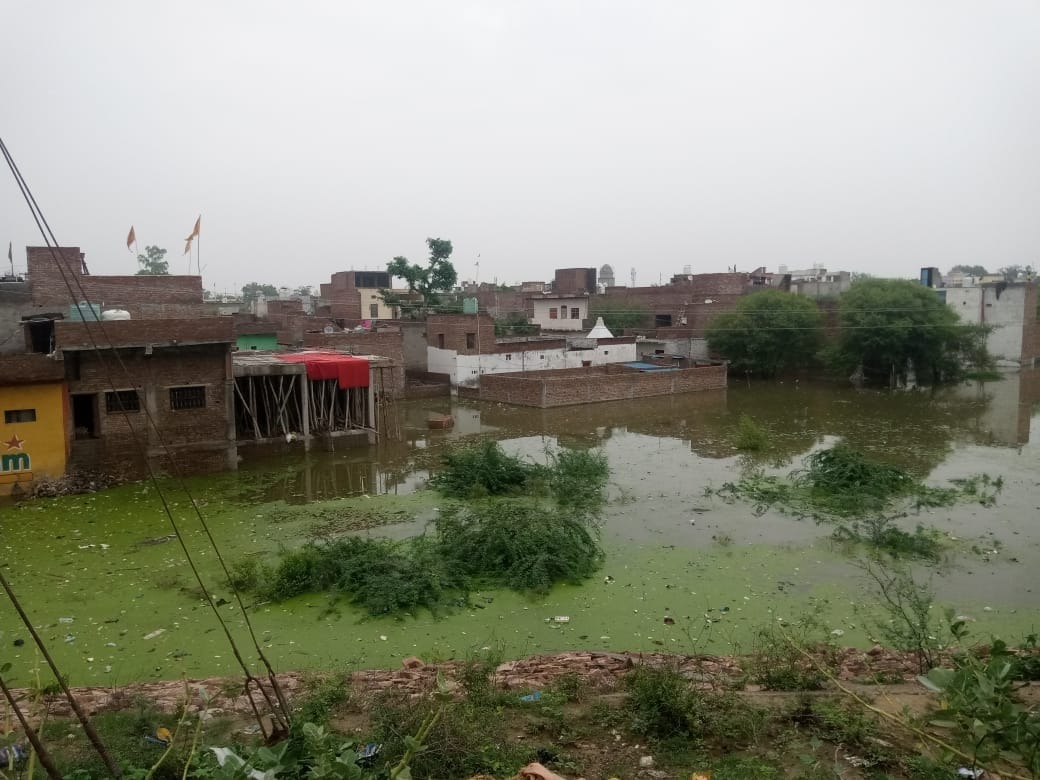Bijayesh Mukherji, J.@mdashWhat court-fee will be paid on a memorandum of appeal presented after May 3, 1963, when the Court-fees (West Bengal Amendment) Act, 18 of 1963, came into force, though the suit out of which the appeal arises was instituted before such amendment ? That is the question debated in this rule, obtained by the defendant-appellant, Narayan Chandra Ghosh, u/s 115 of the Procedure Code (5 of 1908). Here are the facts. In 1960, Sm. Provamoyee Roy Chowdhury and her two sons, the opposite party before me, raised a suit in the court of a munsiff for recovery of khas possession of the disputed land, admeasuring 63 decimals, after eviction of Narayan Chandra Ghosh, the petitioner here, a mere licensee without licence fee. A suit as this was valued at Rs. 510. On the objection of Narayan qua defendant, presumably following the authority of the Special Bench decision of this court in (1) Sisir Kumar Dutta v. Sushil Kumar Dutta, (1960) 65 CWN 1, the valuation was raised to Rs. 5,100, with the result that the plaint had to be, and was, returned on December 22, 1962, for presentation to the proper court. It was presented in the court of a subordinate judge that very day, and deficit court-fees on the basis of enhanced valuation were filed in due course. In the end, a suit as this culminated in a decree against Narayan in June 1964. Narayan appealed. The date of presentation of his appeal is August 14, 1964, when section 7vA, inserted by section 3, subsection 2, of the Court-fees (West Bengal Amendment) Act, 18 of 1963, was very much in force. Clause (b), subclause (ii), thereof provides, in so far as it is material here :
In a suit for recovery of possession of immovable property from a licensee, upon revocation of his licence, where no licence fee is payable by the licensee, the amount of fee payable shall be computed, according to the amount at which the relief sought is valued in the plaint subject to the provisions of section 8C.
Taking his stand on this, the appellant Narayan would not pay court-fees on Rs. 5,100, the valuation come to in the trial court on his own objection, but on -
Rs. 200 u/s 7.vA (b) (ii) plus Rs. 100 u/s 7(i) though initially he had valued the appeal at Rs. 5,100 (Rs. 5,000 plus Rs. 100). The appellate judge rejected such an approach, verging on a somersault, and rejected the memorandum of appeal too. Hence this rule.
2. The fact that section 7vA, clause (b), sub-clause (ii), speaks of a suit and a plaint, whereas what bulks large here is a memorandum of appeal, can by itself, present no insurmountable obstacle. For, section 2 provides, in so far as it is material here :
2. In this Act, unless there is anything repugnant in the subject or context, -
* * *
(4). "suit" includes an appeal from a decree except in section 8A.
Section 8A provides for a statement of particulars of the subject-matter of a suit and the plaintiff''s valuation thereof. So, for section 8A, a suit does not include an appeal. In other words, the requisite statement of particulars has not to be filed in an appeal. It has to be filed in every suit, meaning a suit and only a suit, not an appeal.
3. Still, Narayan''s appeal may be regarded as included in a suit within section 7vA, clause (b), subclause (ii), unless there is anything repugnant in the subject or context. Is such repugnancy there ? No doubt, Narayan''s memorandum of appeal does not seek to recover possession from a licensee.
On the contrary, Narayan resists such possession. But that will not be, in my judgment, the right way to look at the matter. The lie of his appeal must not be overlooked: that the suit against him for recovery of possession of the land, said to have been held by him as a licensee, should fail. Not that the he be given a declaration that he is not a licensee. The test, therefore, should be: what court-fees the respondents, the opposite party before me, would have paid, if they had brought their suit on August 14, 1964 ? Certainly not ad valorem, on the basis of the market value of 63 decimals of land, as they were made to pay in the trial court, because of the law prevailing then, but on the relief sought subject to section 8C, as section 7vA. (b)__(ii)__ prescribes. Otherwise the position would be anomalous in the extreme. If Sm. Provamoyee and her two sons had lost the suit and appealed, they would have got advantage of section 7vA (b) (ii)-an advantage which would be denied to Narayan, though the litigation is one and the same. There cannot be two standards for a fiscal levy in a memorandum of appeal -one for the plaintiff appellant and another for the defendant appellant- though the litigation is one and the relief claimed comes to one too, resting on recovery of possession from a licensee, one in a positive form and another in a negative form. So, this inclusive definition of "suit" in section 2 (4) -not a hard and fast definition, the word "means" only having not been used-includes very much the memorandum of appeal here, arising out of a suit for recovery of possession of immoveable property from a licensee. Indeed, the litigation in the court of appeal is just the litigation in the trial court, save that the roles have been changed, the unsuccessful defendant having become the appellant and the successful plaintiffs having become the respondents. But what is the litigation about? It is for recovery of possession of immoveable property from a licensee, to be insisted on by the respondents and resisted by the appellant by his appeal.
4. Another apparent hurdle remains. Read "memorandum of appeal" for "plaint" in section 7vA (b) (ii), as you very well may and should, because of the inclusive definition of "suit".
But can the court of appeal call in aid section 8C to test the valuation put forward in the memorandum of appeal?
It can Section 8C, adapted to the inclusive definition of "suit", by which "suit" includes an appeal, will read:
If the Court is of opinion that the subject-matter of any appeal - (I am reading "appeal" for "suit") - has been wrongly valued, it may revise the valuation and determine the correct valuation and may hold such inquiry as it thinks fit for such purpose. So, section 8C does apply to an appeal too, nothing to say of the fact that section 8C is on the statute book, by way of abundant caution, the Court''s power to correct the wrong valuation being always there, section 8C or no section 8C (2) Amrita Lal Chatterjee v. Hiralal Chatterjee (1966) 70 CWN 857. But whether the Court will do so or not is another matter, and entirely for the Court. It is. however, well to remember, as pointed out by P. B. Mukharji, J. in the case cited, the value of the relief sought is not the value of the subject-matter of the suit. To put it in another way, the subject-matter of the suit is not necessarily the subject-matter in dispute : (4) Biraja v. Sailaja, (1938) 42 CWN 667.
5. The classification of the suit, out of which Narayan''s appeal arises-
the classification having been u/s 7v. - "shall not be deemed to be a question relating to valuation," as the Explanation to section 12 prescribes. So, a court of appeal, by virtue of section 12(ii), may set right the wrong valuation made by the primary court. But it is wrong valuation that will be set right, not wrong classification. Can the court of appeal, therefore, convert the classification from one u/s 7v. to another u/s 7vA ? Here it can; indeed, the Amendment Act, 18 of 1963, has converted the classification for it. The law which will govern court-fees in an appeal must be the law in force at the time of presentation of the appeal. A long line of authorities hold as much. (3) Mussamut Bhugobutty Kooer v. Mussamut Kustoaree Kooer, (1871) 15 WR 272, reveals a case where the defendants as the appellants were held to be at liberty to alter in appeal the value of the property in dispute as estimated and fixed in the original suit at Rs. 21,000, under Act 26 of 1897, to Rs. 5,103 odd, u/s 7, clause 5, of the Court-fees Act, the new law in force at the time of presentation of the appeal: Cor. Officiating Chief Justice Norman. (5) Anand v. Ramgulam, AIR 1923 Pat 150, deals with a memorandum of appeal presented before a wrong officer on August 18, 1922, when the old Court-fees Act was in force, but presented before the right officer on October 23, 1922, by when the new Court-fees Act had come into force. The new Act, it was held, would govern the appeal. (6) Bimala Prasad Mukherji v. Lal Moni Devi, (1925) 30 CWN 90, is not a case concerning a memorandum of appeal. A plaint filed in a wrong court, before April 1, 1922, when the amended Court-fees Act came into force, was returned for presentation to the proper court where it was presented on November 14, 1922, only to be levied with court-fees under the Amended Act: Cor, Newbould and Graham, JJ. (7)
6. Such principle, well held, cannot be departed from, on the test of benefit to the appellant, urged on behalf of the opposite party. It is wrong to look to the consequences of the relief rather than to the relief itself: (4) Biraja v. Sailaja (1938) 42 CWN 667. In the result, the rule succeeds and be made absolute. The orders of the District Judge, numbering 3 dated September 4, 1964, and 5 dated September 26, 1964, be set aside. The appeal be proceeded with, as usual, and heard out very early. No order as to costs.
Let the records be sent down with the utmost expedition.

